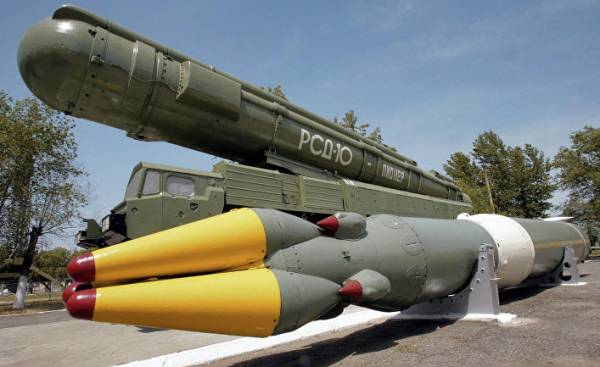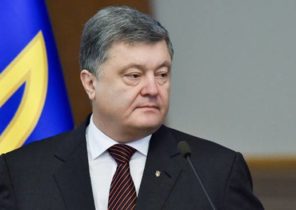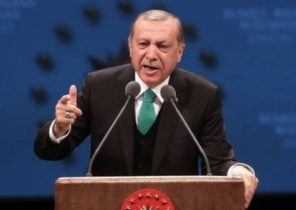
Recently, the media gave another message about the new Russian cruise missiles. If they are based on truth, it is likely that we are talking about breach of Contract on the elimination of medium-range missiles (INF Treaty) thirty years ago. After signing all of Europe literally sighed quietly, but now, it seems that this agreement becomes an historic relic without any prospects in the future.
Briefly let me remind you that it all started in 1976 when the Soviets began to place missiles SS-20 “pioneer”, known in the West as SS-20, with a range of almost five thousand kilometers. Then came the missiles, the OTR-23 “Oka” with a range of 480 kilometers, and before that had already developed missiles “Temp-s” with a range of 900 kilometers. The Americans were already missiles “Pershing”, but Soviet weapons they responded with a new type of “Pershing II”. Also the Americans have placed ground-based cruise missiles Gryphon, close to the famous “Tomahawk” sea-launched.
Then, in the first half of the 80-ies in Central Europe have formed a very dangerous situation, because on both sides of the iron curtain were placed rockets, which are a few tens of minutes could destroy Europe. The psychological pressure was greater than in the case of Intercontinental missiles, which is located somewhere in the United States and the Soviet Union. Missiles medium-range were directly in Central and Western Europe. And no wonder the people were filled with fear.
In the NATO countries against the U.S. missiles deployed large-scale campaign, which, however, completely ignored the Soviet weapons — in particular, due to the fact that these protests are generously sponsored by the KGB. The population of the countries of the Warsaw Pact, of course, could not protest, and had an opportunity to resort to the black humor, as evidenced by the very popular joke when the joke: “Mom, dad, I’m afraid of “Pershing”! Do not be afraid, dear child, SS-20 will save you!”
Although since 1980 the two superpowers discussed the reduction of arsenals of such weapons, the situation changed only with the arrival of Mikhail Gorbachev. He very quickly agreed with the American President Ronald Reagan, and in 1987 he signed the INF Treaty. He has banned the production and deployment of missiles, the maximum range reached 500-5500 kilometers, and was obliged to destroy a total of 2692 American and Soviet missiles. Still this Treaty was considered a great success in the disarmament process because, he was essentially abolished an entire category of carriers of nuclear warheads.
However, the reality was less rosy. The US and the USSR destroyed its medium-range missiles, but they remained in service with other NATO countries and the Warsaw Pact, including from Czechoslovakia, which possessed missiles “Oka”. The contract did not affect the missiles, sea and air-based, so the development of technology continued. During several conflicts the Americans have proven that their missiles “Tomahawk” are actually very accurate and destructive weapons.
This, naturally, got the Russians to develop analogues, more precisely, to improve its missiles, “Garnet” sea-based. Initially, they were only carriers of nuclear warheads, while the “Tomahawk” turned into a fearsome traditional weapons. So they developed a “family” cruise missiles “Caliber”, also known under the export name of the Club and includes multiple anti-ship missiles and missiles against ground targets, which are installed on surface ships, submarines, aircraft and ground-based.
The range of export modifications is limited to MTCR regime (regime of control over missile technologies), therefore, reaches a maximum of 300 kilometers, whereas missiles “Caliber”, standing on the armament of the Russian army, have much better range. This was confirmed by the fighting in Syria, where the Islamists were dealt a blow rockets up in the air from ships in the Caspian sea and flying 2.5 thousand kilometers. However, for several years it is known that Russia has and surface modification “Caliber”, also known as R-500 “Iskander-K” because it comes in such a frightening missile complex “Iskander”.
Incidentally, the latter also is a response to the INF Treaty: a Russian was very sorry for destroyed missiles “Oka”. That is to replace them were developed ballistic missiles “Iskander-M”, whose range is 480 kilometers. It does not exceed the limit set by the INF Treaty. However, some experts believe that the true potential of these rockets higher and with more quality fuel, the Iskander can fly over 700 km, maybe a thousand. In addition to these ballistic missiles, the system includes P-500 (9M728), the claimed range which does not exceed that limit — less than 500 miles.
However, many doubt the veracity of this information. Control mechanisms of the INF Treaty really weak, and impossible to test that exceeds the range of the R-500 is valid. Because from a technical point of view, this missile is a modification of the “Caliber”, her potential exactly up to 2.5 thousand kilometers. Perhaps the range 9M728 deliberately limited, as in the case of export of the rocket Club, but recently there have been reports of new missile 9M729 whose range reaches again about 2.5 thousand kilometers. Thus, we return to that from which he came. In General, apparently, Russia is violating the INF Treaty.
But it is not only in “Caliber” and “Iskander”. The questions raised and the new missile RS-26 Rubezh, which officially belongs to the category of Intercontinental. However, it seems that by design, it represents two stages of the three-stage “Poplars-M”. The maximum range of this missile (allegedly) reaches more than 6 thousand kilometers, which formally removes it from the scope of the INF Treaty. But it is clear that weapons with similar parameters can be ideally used in the same way as “prohibited” rocket.
If in the case of “Caliber” and “Iskander”, the contract was secretly broken, the missile “Boundary” is a resourceful way to circumvent the upper bound limits set by the INF Treaty. The range of 5.5 thousand is actually chosen is the distance between the U.S. and the Soviet Union in the Atlantic direction, so longer-range rockets have technically already belong to the Intercontinental. Anyway the question arises, what goals Moscow is pursuing, going to such steps.
Indeed, despite the tensions between the West and Russia, there is reason to doubt that the Kremlin is interested primarily in the development of missiles against NATO countries. As already mentioned, the INF Treaty was not quite what it was. Medium-range missiles have not completely disappeared and even for several years flourished, but mostly in other countries. China, India, Pakistan, Iran, North Korea and Saudi Arabia these missiles is more than enough, and they are considered an important means of regional rivalry, fear and intimidation.
In the end, this was Vladimir Putin, hinting in 2007 that Russia might withdraw from the INF Treaty to create the Arsenal in opposition to Asian States, which have thousands of medium-range missiles (such as China). Therefore, it is possible that Russia really put all before the fact: she can withdraw from the contract and shortly thereafter to report that it has a new generation of medium-range missiles.
In the Russian media even appear certain statements that may be preparing for such a move. This, in particular the accusations against the US that they also violate the Treaty. The Russians claim, for example, that in the mines of the missile defense system land-based in Romania posted including missiles “Tomahawk” and that educational targets for testing missile defense systems have parameters of medium-range missiles. Also claims are made to the American drones that supposedly should be regarded as a kind of “media” that fall under the INF Treaty. It is unlikely that the contract will be joined by other countries, but hypothetically may come up on the amendment of the agreement between Russia and the United States.
If Moscow’s actions aimed at countering China, the West, of course, don’t have to fix her obstacles. Can also justify the assumption, made recently by one Czech expert on nuclear weapons, Peter Dry. According to him, the US and Russia can agree on how to place medium-range missiles, but only in Asia. If Russia insisted on their placement, for example, West of the Urals, it clearly would indicate that the INF Treaty has just lost all meaning.
To this script may already be secretly prepared and the USA. Three senators, including former presidential candidate Marco Rubio, introduced a bill INF Treaty Preservation Act. In fact, it contains measures that are intended to force Moscow to return to the performance of the contract. Part of the project is that it would seem paradoxical, funding “response” to the new Russian missiles, and in extreme cases — opposition, it has its own weapons in this category.
The last option will probably mean a complete rejection of the INF Treaty, from which, apparently, in this case, will both sides and the new round of the arms race, which no doubt could also affect Europe. Because the motivation of Moscow remains unclear, it is impossible to say exactly what we expect. One thing is clear: if the INF Treaty still want to save, no changes are necessary. However, NATO members, specifically, should be prepared and the option of termination of the agreement, or rather to the adverse scenario in which medium-range missiles will return to Europe.







